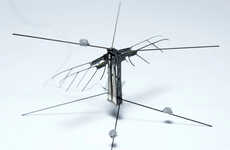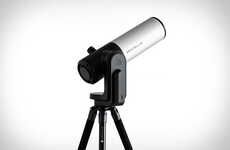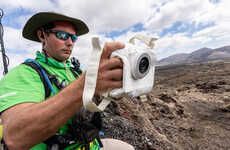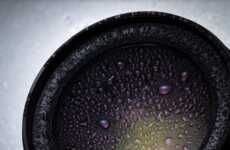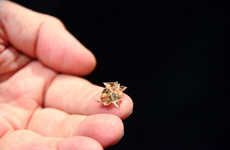
This Nikon Small World Winning Photograph Shows a Microscopic View of Bee's Eye
Charlotte Joyce Kidd — October 15, 2015 — Tech
References: nikonsmallworld & techtimes
Every year, the Nikon Small World competition gathers the best examples of photography that captures things unseen by the naked eye. This year's winner, an exponentially magnified image of a honey bee's pollen-covered eye, is stunning and fascinating from a scientific and photographic perspective.
The first Nikon Small World photomicrography competition was held in 1974 to celebrate and display the science and art of capturing images with a light telescope. Ever since, the contest has generated an unbelievable array of microscopic images. Each year's winner is chosen based on both their technical and photographic skill.
This year's Nikon Small World winning photo, taken by Australian high school teacher Ralph Grimm, was created over the course of four hours, during which Grimm worked on mounting and lighting the honey bee eye and then incrementally adjusting the focus until it was close enough to capture the image.
The first Nikon Small World photomicrography competition was held in 1974 to celebrate and display the science and art of capturing images with a light telescope. Ever since, the contest has generated an unbelievable array of microscopic images. Each year's winner is chosen based on both their technical and photographic skill.
This year's Nikon Small World winning photo, taken by Australian high school teacher Ralph Grimm, was created over the course of four hours, during which Grimm worked on mounting and lighting the honey bee eye and then incrementally adjusting the focus until it was close enough to capture the image.
Trend Themes
1. Microscopic Photography - The increasing popularity of microscopic photography offers opportunities for innovation in scientific research, education, and medical fields.
2. Alternative Perspectives - The trend towards capturing alternative perspectives challenges traditional photography techniques and provides opportunities for artistic expression and unique visual experiences.
3. Technical Skill Showcase - Photography competitions like Nikon Small World highlight the importance of technical skill and precision, providing opportunities for photographers and scientists to showcase their abilities and advance their fields.
Industry Implications
1. Science Research - Microscopic photography can be utilized in scientific research to provide new insights into the world around us and to advance our understanding of complex phenomena.
2. Education - Microscopic photography can be utilized in educational settings to engage students and provide a unique and interactive learning experience, especially for fields such as biology and medicine.
3. Art and Design - Alternative perspectives offered by microscopic photography can inspire new and unique art and design ideas, such as incorporating microscopic images into product design or creating abstract art pieces.
2.8
Score
Popularity
Activity
Freshness





